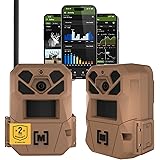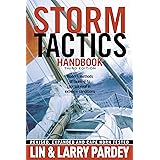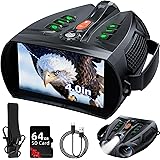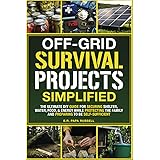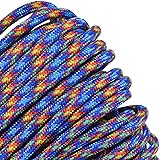Considering the unforgiving wilderness of Alaska, where the landscape is as beautiful as it is dangerous, have you ever contemplated what firearms would be essential for survival? The brief yet impactful video above offers a quick rundown of top picks, but understanding the rationale behind these choices is paramount. In environments where dangerous game like brown bears, black bears, and moose roam freely, and where human assistance might be days away, reliable and potent survival firearms for Alaska are not merely an option but a critical necessity.
The selection of a firearm for Alaskan conditions involves careful consideration of stopping power, reliability in extreme cold, moisture resistance, and practical handling. These are not merely hunting tools but instruments of defense against unexpected threats. Therefore, a multifaceted approach to firearm selection is often advised, ensuring that various scenarios can be effectively addressed.
Choosing the Right Survival Firearms for Alaska
When selecting firearms for survival in Alaska, several factors must be weighed. The primary concern is often defense against large, aggressive animals, which necessitates calibers with significant kinetic energy. Furthermore, the firearm’s construction must be durable enough to withstand harsh weather, including freezing temperatures and persistent moisture, making stainless steel or corrosion-resistant finishes highly desirable. Ease of maintenance in the field, along with readily available ammunition, also contribute to a firearm’s overall utility. The list presented in the video highlights categories of firearms that typically excel in these demanding conditions.
Shotguns for Alaskan Wilderness
A 12-gauge shotgun, such as the Remington 870, is frequently recommended for its versatility and formidable stopping power. This type of firearm is considered a staple for many Alaskan residents due to its ability to cycle various ammunition types. Birdshot, buckshot, and slugs can be loaded, making it suitable for small game hunting, waterfowl, and most critically, defense against large mammals. When confronting a charging bear, heavy slugs are typically employed, which can deliver a devastating blow at close range.
The robustness of pump-action shotguns, like the Remington 870 or Mossberg 500, is also a significant advantage. Their mechanical simplicity generally means they are less prone to malfunction in adverse conditions compared to some semi-automatic designs. A shotgun equipped with a short barrel (18-20 inches) is often preferred for easier maneuverability in dense brush and quicker target acquisition in an emergency.
High-Powered Hunting Rifles: The .30-06 Advantage
The video points towards a lightweight hunting rifle, specifically mentioning the Kimber Mountain Ascent, and advocating for the .30-06 Springfield caliber over the .270. This distinction is crucial for serious wilderness survival. While the .270 Winchester is an excellent cartridge for deer and elk, the .30-06 is broadly considered a more appropriate minimum for dealing with North American dangerous game.
The .30-06 offers a wider range of bullet weights and designs, providing superior penetration and energy transfer necessary to incapacitate large, thick-skinned animals. It is a time-tested cartridge that has been successfully used for all types of Alaskan game. A lightweight model is desirable for extended treks into the backcountry, where every ounce counts, but reliability and accuracy cannot be compromised. The ability to place an accurate shot at varying distances can be vital, both for securing food and for self-defense.
Lever-Action Rifles for Close Encounters: The .45-70 Government
The inclusion of a .45-70 lever gun, with Marlin and Henry being cited as preferred manufacturers, underscores the need for potent, rapid-fire capability in close-quarters defense. The .45-70 Government is a large-bore, heavy-hitting cartridge specifically designed for big game. When loaded with modern, stout cartridges, its power is immense, making it an excellent choice for bear defense.
Lever-action rifles are admired for their quick follow-up shots and compact design, which makes them highly maneuverable in thick woods. A stainless steel model is explicitly mentioned for its resistance to corrosion, which is a major concern in the wet Alaskan climate. Furthermore, a “scout setup” often implies a compact, handy rifle, potentially with an extended eye relief scope mounted forward on the barrel, allowing for both rapid target acquisition and peripheral vision in high-stress situations. The historical reliability of lever actions also plays a role in their continued popularity for survival scenarios.
Big Bore Handguns for Bear Defense
For personal defense against large predators, a big bore revolver is deemed indispensable, with the Smith & Wesson 500 being highlighted and a .44 Magnum as a minimum. The Ruger Toklat in .454 Casull is also specifically referenced, demonstrating a preference for calibers that offer exceptional power. These revolvers are chosen for their profound stopping power, which can be critical in very close, sudden encounters with dangerous animals.
The .500 S&W Magnum stands as one of the most powerful production handgun cartridges available, capable of delivering immense energy. While the .44 Magnum is formidable, cartridges like the .454 Casull or .500 S&W Magnum provide an added margin of safety against truly large and aggressive threats. A revolver’s inherent reliability and ability to function with high-pressure loads are significant advantages in a survival context. Carrying a powerful handgun offers a last line of defense and can be more readily accessible than a rifle or shotgun in certain unexpected scenarios.
Reliable 10mm Pistols for Alaskan Conditions
Finally, the video suggests a good 10mm pistol, with Springfield XDM and Glock 20 being mentioned, and the Glock 20 particularly noted as a preferred choice. The 10mm Auto cartridge has gained significant traction as a powerful semi-automatic handgun round suitable for wilderness defense. It offers a balance of manageable recoil and impressive ballistics, often surpassing the energy of the .44 Magnum in some loads.
For those who prefer a semi-automatic platform, the 10mm provides higher capacity compared to revolvers, which can be a psychological and practical advantage in a prolonged encounter. The Glock 20, in particular, is lauded for its robust construction, renowned reliability, and resistance to environmental elements. It is a capable sidearm for both two-legged and four-legged threats, offering versatility as a secondary or even primary defense tool in the Alaskan backcountry. Its compact nature allows it to be carried easily, ensuring that a potent defensive option is always within reach.


